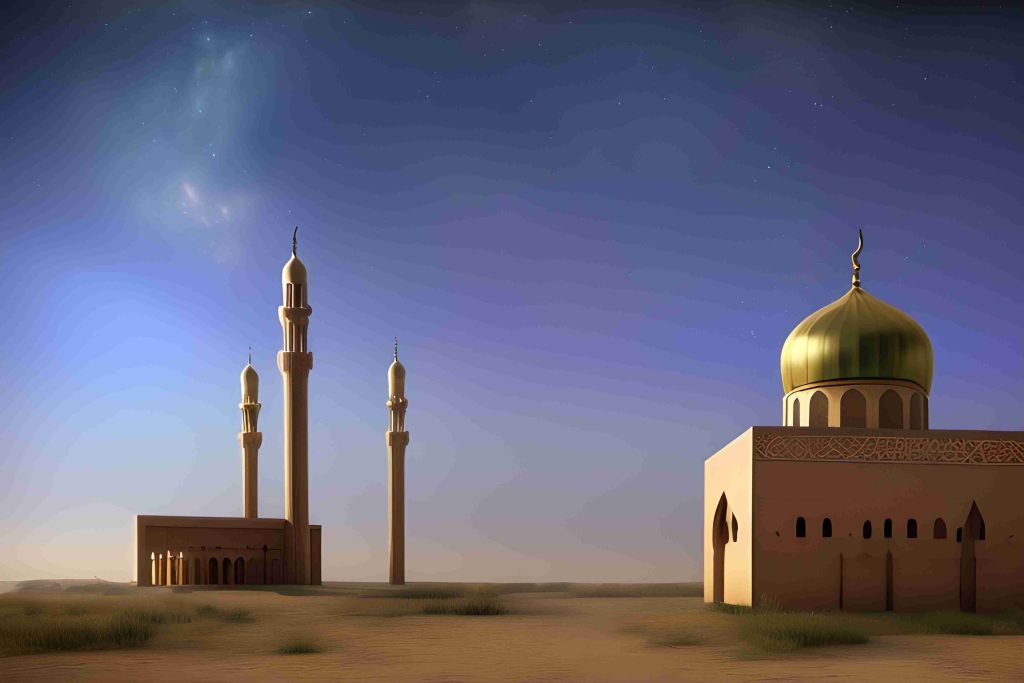Prophet Muhammad’s (pbuh) life is an inspirational beacon of guidance for countless individuals across the globe; yet the most significant moment in his life was to successively mark Medina as a vibrant community. It indicated the transformation of Islam, changing from a faith faced with persecution in Mecca into one becoming a dynamic religious and political entity; it also exemplified leadership, likely setting the path for the future of Muslims.
After relentless persecutions in Mecca, Prophet Muhammad (PBUH) received in invitation from the people of Yathrib, who would thereafter be called Medina, to come and be their leader. He undertook the Hijra with his followers, into which event the Islamic year is inaugurated, in 622CE. Involved in this migration was more than a mere physical relocation; it was indeed a strategic important move which indicated his foresight and leadership abilities. It was during this time that he devoted himself to creating a common society in Medina.
The first actions Muhammad (PBUH) undertook after arriving in Medina were the establishment of the Constitution of Medina. This revolutionary document became the basis for a pluralistic society, formalizing the relationship between Muslim immigrants (the Ansar) and native Medinans (the Khazraj and Aws tribes), acknowledging the rights and obligations of all community members, including Jews and polytheists. The recognition afforded to the rights of all community members promoted coexistence and inclusion under this constitution. This example depicted how he would lead by example to future governance.
He has trained up to October of the year 2023. The Prophet further established social bonds and joint responsibilities among the Medinans. He instructed the Ansar and the Muhajirin to establish brotherhoods so that they can feel togetherness in whatever they did. Not only did these brotherhoods create social cohesion, but they also guaranteed that if anything ever needed to be done, there would be support in it. Empathetic and understanding leadership was in the Prophet’s style while dealing with the challenges faced by the community after the Hijra.
In the next few years after he made Medina, Prophet Muhammad (PBUH) provided safety and security to the city. He cut rival tribes through negotiation, and only when that failed took to military action. Although many of his negotiations averted bloodshed, he emphasized the need for dialogue and resolution of disputes. An important case of him fighting with tactical brilliance was during the battle of Badr in CE 624 when he managed to lead a limited number of Muslims into conquest against the Quraysh. It served the dual purpose of strengthening the position of Muslims and also throwing a message on the iron-fisted will of their newly formed community to its enemies.
Education, combined with moral development, formed part of the Prophet’s mark of leadership. Mosques were built as centers of learning and a place where society got together. The Prophet wanted people to understand the need for knowledge and learning, therefore calling people to acquire education. By this, he would create an environment where learning was prioritized, thus laying a solid foundation for a great intellectual tradition within Islam, which would penetrate through the future centuries.
Above all, the personal example of Prophet Muhammad (PBUH) was important for his leadership in Medina. His uprightness, fellows’ and dispassionate treatment, and concern for justice reflected himself to the group. He was a leader who epitomized what he possessed-the virtues he preached. Owing to his live modestly but serve the people mentality, he gathered in the loyalty and respect of a following.
Thus Prophet Muhammad’s (PBUH) strategic foresight, inclusivity, conflict resolution skills, and moral integrity were hallmarks of leadership in developing Medina. Successes there become unending significance in terms of governance, societal building, and strength in unity. His legacy in Medina was the foundation for an Islamic state but also established a model for future leaders across many different contexts worldwide.

